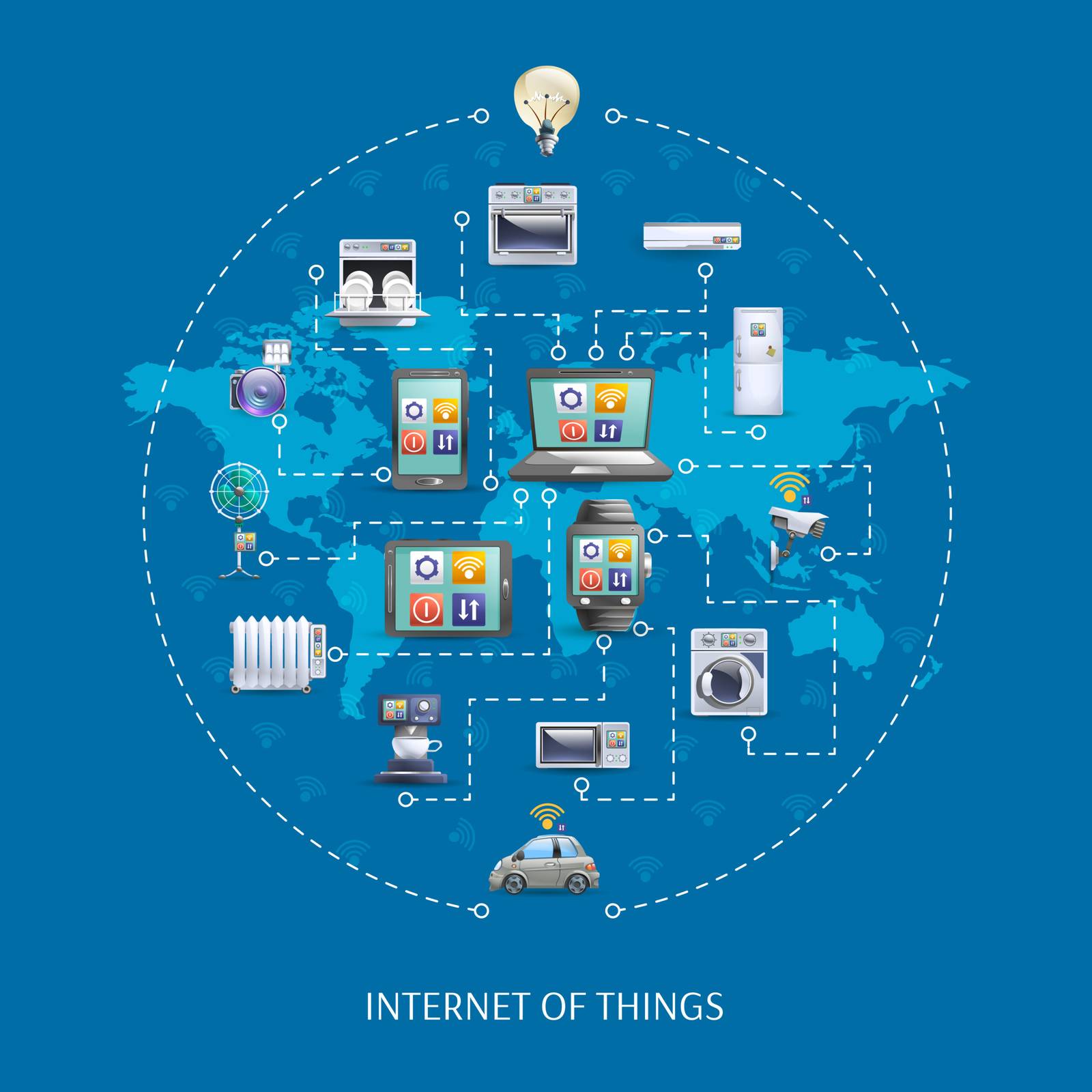IoT: Connecting Our World Like Never Before

by Web Digital
In the rapidly evolving landscape of technology, the Internet of Things (IoT) has emerged as a transformative force, interweaving the virtual and physical realms of our lives like never before. The IoT represents a paradigm shift in the way devices, objects, and even environments communicate and collaborate, promising increased efficiency, convenience, and innovation across industries. This article explores the profound impact of IoT, delving into its applications, benefits, challenges, and the potential it holds for our interconnected future.
Unveiling the IoT
At its core, the IoT refers to the network of interconnected devices embedded with sensors, software, and connectivity capabilities, enabling them to collect, exchange, and act upon data. These devices can range from everyday objects like smart refrigerators and wearable fitness trackers to industrial machinery and entire smart cities. The driving force behind IoT’s proliferation is its ability to enable seamless communication between devices, creating an intricate web of interactions that has the potential to enhance nearly every facet of modern life.
The Versatility of IoT Applications
IoT’s versatility is showcased through its diverse range of applications:
1. Smart Homes
Connected thermostats, lighting systems, and security cameras enable homeowners to control and monitor their living spaces remotely, enhancing comfort, energy efficiency, and security.
2. Healthcare
Wearable devices and remote monitoring systems empower healthcare professionals to track patients’ vital signs, medication adherence, and overall health in real time, leading to more personalized and timely interventions.
3. Industrial IoT (IoT)
In industries such as manufacturing and agriculture, IoT-enabled sensors and devices optimize processes by providing real-time data on equipment performance, supply chain logistics, and environmental conditions.
4. Smart Cities
IoT transforms urban environments into Smart Cities, where connected infrastructure, waste management systems, and traffic controls enhance efficiency, sustainability, and citizens’ quality of life.
5. Agriculture
IoT sensors monitor soil moisture, weather conditions, and crop health, enabling farmers to make data-driven decisions that increase yields and reduce resource waste.
Benefits Beyond Imagination
The integration of IoT into our lives yields a multitude of benefits:
1. Enhanced Efficiency
Automated processes and real-time data insights enable efficient resource allocation, reducing waste and optimizing operations across industries.
2. Improved Decision-Making
Access to timely and accurate data empowers individuals and organizations to make informed decisions, leading to better outcomes.
3. Convenience and Connectivity
IoT-enabled devices seamlessly communicate with one another, offering users convenience and unprecedented levels of connectivity.
4. Predictive Maintenance
In industrial settings, IoT data can predict when machinery requires maintenance, minimizing downtime and preventing costly breakdowns.
5. Environmental Sustainability
IoT’s data-driven approach helps conserve resources by optimizing energy consumption, reducing pollution, and enhancing waste management.
Challenges on the Path to Connectivity
While the promise of IoT is captivating, several challenges must be addressed:
1. Security Concerns
The vast network of connected devices creates potential vulnerabilities, as breaches in one device could compromise an entire network. Strong cybersecurity measures are crucial for safeguarding sensitive data.
2. Data Privacy
The extensive data collected by IoT devices raises concerns about user privacy. Striking a balance between data collection and privacy protection is a critical consideration.
3. Interoperability
Ensuring that diverse IoT devices can communicate and work together seamlessly requires standardized protocols and architectures.
4. Scalability
As IoT networks expand, managing the massive volume of data generated becomes increasingly complex. Scalable data storage and processing solutions are necessary.
5. Energy Consumption
IoT devices need power to function, and the increased deployment of these devices raises questions about energy efficiency and sustainability.
The Road Ahead for IoT
The future of IoT is ripe with possibilities:
1. 5G Connectivity
The rollout of 5G networks will provide the high-speed, low-latency connections required to support the proliferation of IoT devices.
2. Edge Computing
Edge computing, which processes data closer to the source, will reduce latency and improve the speed of IoT applications.
3. AI and Machine Learning Integration
The fusion of AI and machine learning with IoT data will enable more sophisticated analysis and decision-making.
4. Expansion of Use Cases
As IoT technology matures, it will unlock new and unforeseen use cases across industries, driving innovation and economic growth.
5. Ethical Considerations
As IoT continues to shape society, ethical frameworks must evolve to address issues like data ownership, consent, and accountability.
Conclusion
The Internet of Things is reshaping the way we interact with technology, each other, and the world around us. From smart homes to connected cities, its impact spans industries and promises a future where data-driven insights enhance our lives in previously unimaginable ways. However, realizing the full potential of IoT requires addressing challenges like security, privacy, and interoperability. As we navigate this technological frontier, a thoughtful and responsible approach will ensure that the IoT landscape benefits society as a whole, driving progress and connectivity toward new horizons.
Recommended Posts

Local SEO for Wasaga Beach: Getting Found on Google Maps
December 4, 2024


